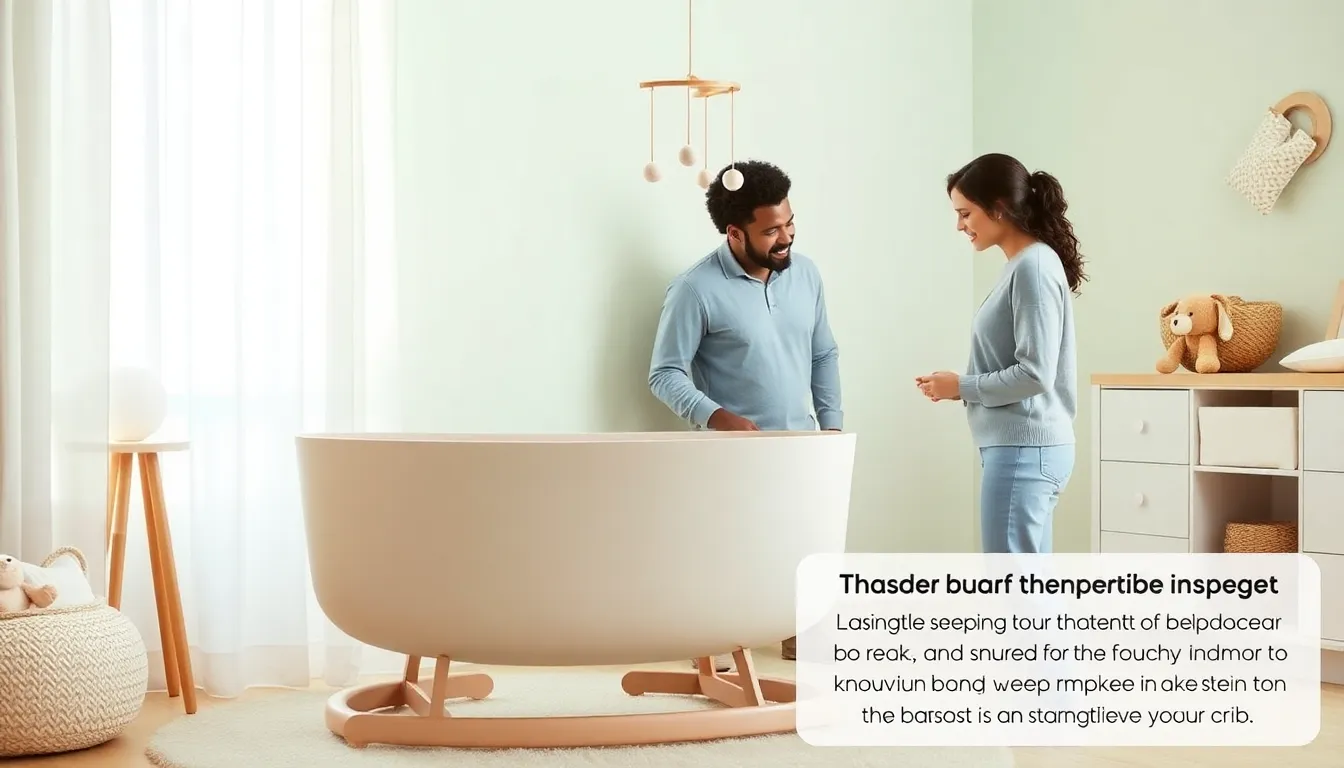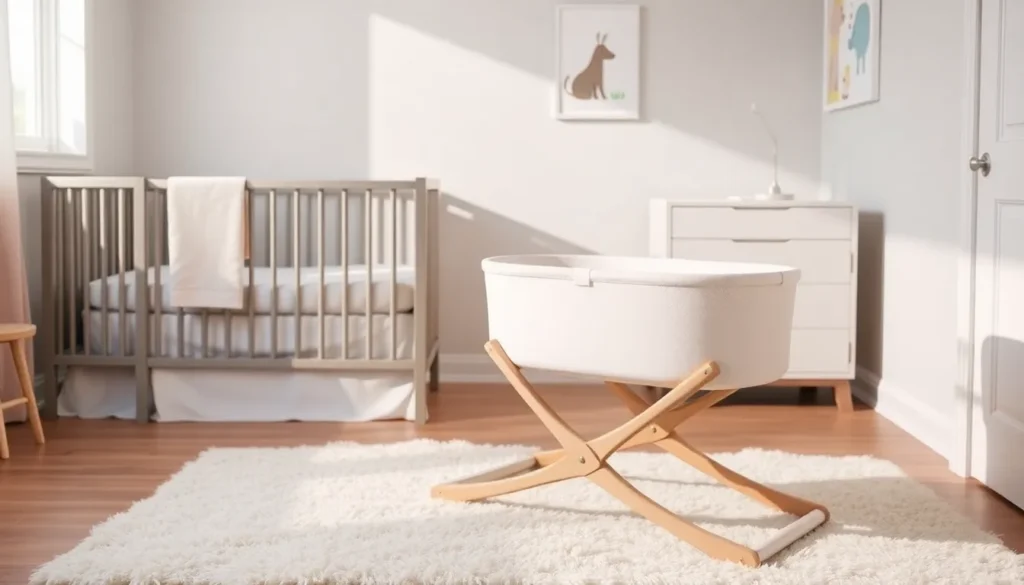Table of Contents
ToggleEver found yourself staring at a tiny human, wondering just how long they’re going to stay in that bassinet? If so, you’re not alone. The journey from bassinet to crib can feel like a race against time, especially as your little one grows rapidly. But don’t worry: understanding the ins and outs of bassinet use is easier than it sounds. Stick around as we explore how long babies typically stay in bassinets, what factors come into play, and some tips along the way.
Understanding Bassinet Use

Bassinets are compact sleeping spaces designed for newborns and young infants. Their cozy structure offers a snug environment, mimicking the tight quarters babies are used to in utero. Parents often choose bassinets for their portability and the ease of keeping the baby close during those sleepless nights. But how do you know when your sweet bundle of joy has outgrown this delightful little nest?
Ideal Age Range for Bassinet Use
Most experts recommend that babies stay in a bassinet until they are about three to four months old. But, it’s crucial to not only consider age but also size and development. If babies start showing signs of rolling over, it’s time to transition to a crib. Each child is unique, so don’t rely solely on the calendar: instead, pay attention to your baby’s individual milestones. For some, that might be sooner than expected, so keep an eye on your mini explorer.
Factors Influencing Bassinet Duration
Various factors influence how long a baby stays in a bassinet. Firstly, the baby’s weight can play a significant role. Most bassinets have weight limits typically ranging from 15 to 30 pounds. Also, developmental milestones come into play. If a child suddenly starts rolling, sitting up, or attempting to stand, it’s a clear sign they need a more suitable sleeping space. Finally, parent preferences and lifestyle can also impact the decision. Traveling or moving between rooms can make a bassinet a preferred choice for some families, extending its use.
Transitioning From Bassinet To Crib
Transitioning from a bassinet to a crib can be an emotionally charged time. After all, that snug little bassinet has likely been a place of comfort for both the baby and parents. Begin the transition by introducing your child to the crib during daytime naps: this allows them to familiarize themselves with the new environment. Consistency helps: keep a routine for bedtimes and ensure the crib is just as cozy and welcoming as the bassinet was. Also, don’t be surprised if it takes time. Patience is key: your baby will adapt in no time.
Safety Guidelines When Using a Bassinet
Using a bassinet comes with certain safety guidelines that must not be overlooked. Always place the bassinet on a firm, flat surface away from any hazards like cords or curtains. Ensure that it meets the safety standards set by the Consumer Product Safety Commission (CPSC). Keep bedding minimal: just a fitted sheet is often sufficient. Avoid adding blankets or stuffed toys, as these can pose suffocation risks. Finally, always monitor your baby, especially as they grow stronger and more curious.
Alternatives To Bassinets
If you find that a bassinet doesn’t suit your family’s needs, fear not. There are plenty of alternatives available. Cradle swings and co-sleepers can provide similar benefits while allowing for closeness during sleep. Pack ‘n plays are another versatile option, offering a portable sleeping space that can grow with your child. As you explore these alternatives, consider your lifestyle and your baby’s comfort.






